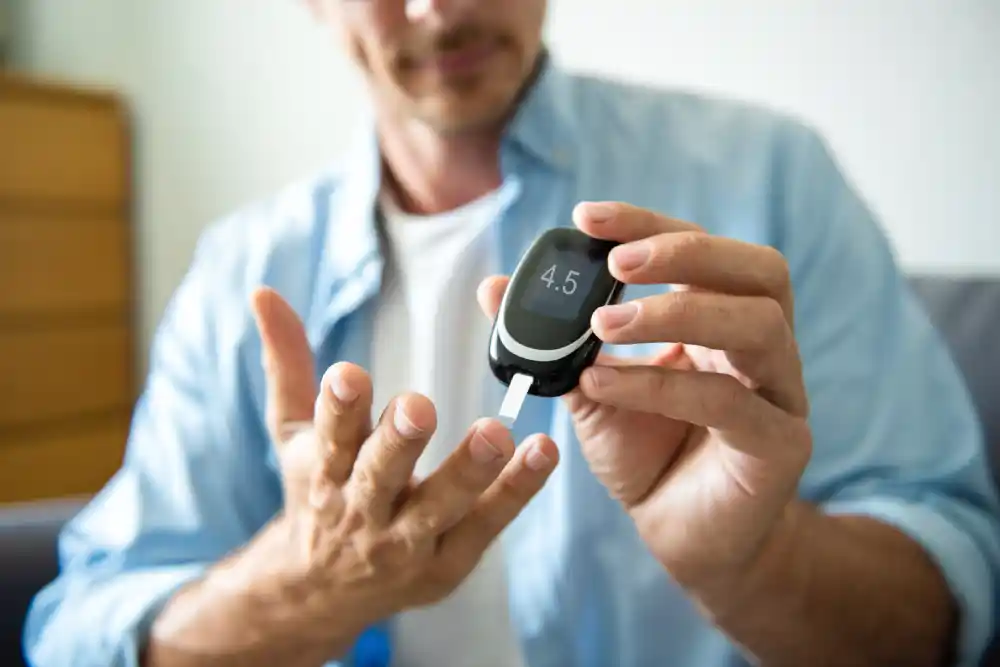A1C Home Test: Managing Diabetes with Confidence
Managing diabetes is a daily challenge, but advancements in healthcare technology have made it easier for individuals to monitor their condition from the comfort of their homes. One crucial tool in this regard is the A1C home test, which offers a convenient and effective way to track blood glucose levels over time. In this blog post, we’ll explore the importance of A1C testing, how it works, and how it can empower you to take control of your diabetes management.
Understanding A1C
Before diving into the details of A1C home testing, let’s grasp the basics of what A1C is and why it matters for individuals with diabetes.
A1C, also known as Hemoglobin A1C or HbA1c, is a measure of your average blood glucose levels over the past 2-3 months. Unlike daily fingerstick tests, which give you a snapshot of your current blood sugar level, the A1C test provides a more comprehensive view of your glycemic control. It is expressed as a percentage, with the goal for most people with diabetes being to keep it within a specific range recommended by their healthcare provider.
The Importance of A1C Monitoring
- Long-term Perspective: A1C reflects your overall blood sugar management over several weeks, which helps healthcare professionals identify trends and make informed decisions regarding your treatment plan.
- Treatment Adjustment: Based on your A1C results, your healthcare team can adjust your medication, insulin, or lifestyle recommendations to achieve better blood sugar control.
- Risk Reduction: Keeping your A1C within the target range can significantly reduce the risk of diabetes-related complications, such as heart disease, kidney problems, and nerve damage.
- Motivation: Regular A1C testing provides motivation for individuals with diabetes to maintain healthy lifestyle habits and adhere to their prescribed treatments.
A1C Home Testing: How Does It Work?
In the past, A1C tests were primarily conducted in healthcare settings, requiring a blood sample to be drawn and sent to a laboratory. However, technological advancements have made it possible for individuals to perform A1C testing in the comfort of their homes.
Here’s a step-by-step guide on how A1C home testing typically works:
- Obtain an A1C Test Kit: You can purchase an A1C home test kit from a pharmacy or online. These kits are readily available and relatively affordable.
- Prepare the Kit: Follow the instructions provided with the kit to prepare for the test. This usually involves inserting a test cartridge into a monitoring device.
- Collect a Blood Sample: Using a lancet, prick your finger to obtain a small blood sample. Some A1C test kits require more blood than typical glucose meters, but the process is generally painless.
- Insert the Sample: Apply the blood sample to the designated area on the test cartridge.
- Wait for Results: The monitoring device will analyze the blood sample and provide your A1C result within a few minutes.
- Interpret the Results: Your A1C result will be displayed as a percentage. Compare it to your target range as advised by your healthcare provider.
- Discuss with Your Healthcare Provider: Share the results with your healthcare team during your regular check-ups or consultations. They will help you understand the implications and make any necessary adjustments to your diabetes management plan.
Advantages of A1C Home Testing
- Convenience: A1C home testing allows you to monitor your diabetes at your convenience, eliminating the need for frequent clinic visits.
- Cost-Effective: While there may be an initial investment in the test kit, it can save you money in the long run by reducing the need for frequent lab tests.
- Privacy: You can perform the test in the privacy of your own home, avoiding potential discomfort or embarrassment associated with in-clinic testing.
- Frequent Monitoring: With easy access to A1C testing, you can monitor your progress more frequently, helping you stay on top of your diabetes management.
- Timely Adjustments: The ability to test at home allows for quicker adjustments to your treatment plan, as you can catch fluctuations in blood sugar levels sooner.
Tips for Successful A1C Home Testing
To ensure accurate results and make the most of your A1C home testing experience, consider these tips:
- Follow Instructions Carefully: Always read and follow the instructions provided with your test kit to the letter.
- Testing Frequency: Discuss with your healthcare provider how often you should perform A1C tests at home. This may vary depending on your diabetes type and treatment plan.
- Storage: Store your test kit components in a cool, dry place, as per the manufacturer’s recommendations.
- Consistency: Try to perform the test at the same time of day each time for consistency in your results.
- Record Keeping: Maintain a record of your A1C results, including the date and any relevant notes or changes in your routine.
- Consultation: Always share your A1C results with your healthcare provider to make informed decisions about your diabetes management.
A1C Home Testing vs. Laboratory Testing
While A1C home testing offers convenience and cost savings, it’s essential to understand the differences between home testing and laboratory testing:
Accuracy: Laboratory tests are generally considered more accurate due to the controlled environment and professional oversight. However, home tests are highly reliable when used correctly.
Cost: Home testing may be more cost-effective in the long run, while laboratory tests may incur additional costs, such as clinic visits and lab fees.
Convenience: Home testing provides the convenience of testing on your schedule, while laboratory tests may require appointments and travel.
Frequency: Depending on your healthcare provider’s recommendations, you may need more frequent A1C tests with home testing compared to laboratory tests.
Ultimately, the choice between A1C home testing and laboratory testing depends on your preferences, healthcare provider recommendations, and your specific diabetes management needs.
Conclusion
A1C home testing is a valuable tool in managing diabetes effectively. It provides you with a comprehensive view of your blood sugar control over time, empowering you to make informed decisions about your treatment plan. With the convenience and privacy it offers, A1C home testing can be a game-changer in your journey to better diabetes management. Remember, consistency and regular consultation with your healthcare provider are key to success. Embrace this technology, take control of your health, and live your best life with diabetes.
Disclaimer: The information provided in this blog post is for informational purposes only and should not be considered a substitute for professional medical advice. Always consult with your healthcare provider for personalized guidance on managing your diabetes and interpreting your A1C test results.
References:
- American Diabetes Association – A1C
- [Mayo Clinic – A1C Test](https://www.mayoclinic.org/tests-procedures/a1c-test/about/pac-20384643











